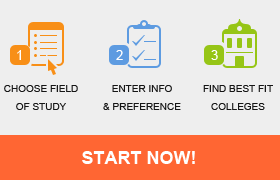Bay Path College
STUDENTS AND FACULTY
Enrollment: 1,409.
Student Body: 100% female, % out-of-state, 1% international (8 countries represented). Asian 2%, African American 11%, Caucasian 71%, Hispanic 12%.
Retention and Graduation: 73% freshmen return for sophomore year. 49% freshmen graduate within 4 years.
Faculty: Student/faculty ratio 14:1. 44 full-time faculty, 52% hold PhDs, 7% are members of minority groups, 70% are women.
ACADEMICS
Degrees: Associate, bachelors, certificate, masters, post-bachelor’s certificate.
Classes: Most classes have 10-19 students. Most lab/discussion sessions have 10-19 students. Majors with Highest-Enrollment: Business administration and management; forensic science and technology; psychology.
Special Study Options: Accelerated program, cooperative education program, cross-registration, distance learning, double major, English as a Second Language (ESL), exchange student program (domestic), honors program, independent study, internships, student-designed major, study abroad, teacher certification program, weekend college, directed study program.
Honors programs: The Bay Path Honors Program offers unique learning experiences to the most qualified undergraduate students through honors courses, service projects, on and off campus events and participation in and development of the Bay Path College Honors Program community. The Honors Program at Bay Path provides academically talented and motivated students with uniquely challenging and intellectually stimulating educational opportunities. In the first two years, Honors students take team-taught, interdisciplinary seminars on specific topics, such as Darwin Across the Disciplines. This innovative approach broadens exposure to areas outside the major and provides connections with other Honors students. In the last two years, under the guidance of a faculty mentor, students are immersed in their field of study and are urged to explore new areas of knowledge with an Honors thesis or creative project. Special programs offered to physically disabled students include tutors.
Career services: Alumni network, alumni services, career/job search classes, career assessment, internships, regional alumni.
Career services highlights include: The school has a very strong internship program, with all students required in each respective major to perform fieldwork, an internship, student teaching, or experiential learning. Internships are listed in the top 3 important experiences employers wish to see on a college students resume, aside from major and degree achieved. 64
FACILITIES
Housing: Women’s dorms. 50% of campus accessible to physically disabled.
Special Academic Facilities/Equipment: Blake Student Commons, Bashevkin Academic Development Center, Breck Fitness Center, occupational therapy laboratory, and D’Amour Hall for Business, Communications and Technology.
Computers: 100% of libraries, 100% of dining areas, 100% of student union, 25% of common Outdoor areas have wireless network access. Students can register for classes online. Administrative functions (other than registration) can be performed online.
CAMPUS LIFE
Environment: Village.
Activities: Choral groups, dance, drama/theater, literary magazine, musical theater, student government, student newspaper, international student organization, Model UN.
Organizations: 42 registered organizations, 3 honor societies, 1 religious organizations.
Athletics (Intercollegiate): Basketball, cross-country, field hockey, soccer, softball, tennis, volleyball.
On-Campus Highlights: Carpe Diem Cafe, Toner/Helliwell Hearth and Lounge, Game Room, Breck Fitness Center, D’Amour Hall for Business, Communications and Tech. Environmental Initiatives: Recycling program; Energy Conservation Efforts—conversion of electric heat in student residence hall to gas heat.
ADMISSIONS
Freshman Academic Profile: Average high school GPA 3.15. 16% in top 10% of high school class, 47% in top 25% of high school class, 77% in top 50% of high school class. 93% from public high schools. SAT Math middle 50% range 420-530. SAT Critical Reading middle 50% range 430-540. SAT Writing middle 50% range 420-540. ACT middle 50% range 17-21. Minimum paper TOEFL 500. Minimum computer TOEFL 177. Minimum web-based TOEFL 62.
Basis for Candidate Selection: Academic GPA, rigor of secondary school record. Standardized test scores. Class rank, application essay, recommendation(s), alumni/ae relation, character/personal qualities, extracurricular activities, first generation, geographical residence, interview, level of applicant’s interest, state residency, talent/ability, volunteer work, work experience.
Freshman Admission Requirements: High school diploma is required and GED is accepted. 4 English, 3 mathematics, 2 science, (2 science labs), 2 social studies, 1 history. 4 English, 4 mathematics, 3 science, (2 science labs), 2 foreign language, 2 social studies, 2 history.
Freshman Admission Statistics: 635 applied, 83% admitted, 29% enrolled.
Transfer Admission Requirements: College transcript(s), minimum college GPA of 2.0 required. Lowest grade transferable O.
General Admission Information: Application fee $25. Notification on a rolling basis, beginning on or about 9/15. Nonfall registration accepted. Placement offered for CEEB Advanced Placement tests.
COSTS AND FINANCIAL AID
Annual tuition $23,840. Room and board $9,750. Average book expense $1,200.
Required Forms and Deadlines: FAFSA, institution’s own financial aid form. Priority financial aid filing date 3/15.
Notification of Awards: Applicants will be notified of awards on a rolling basis beginning 3/1.
Types of Aid: Federal Pell, SEOG, state scholarships/grants, private scholarships, the school’s own gift aid. FFEL Subsidized Stafford, FFEL Unsubsidized Stafford, FFEL PLUS, Federal Perkins, state loans.
Student Employment: Federal Work-Study Program available. Institutional employment available. Highest amount earned per year from on-campus jobs $2,000.
Financial Aid Statistics: 85% freshmen, 815% undergrads receive need-based scholarship or grant aid. 5% freshmen, 47% undergrads receive non-need-based scholarship or grant aid. 76% freshmen, 731% undergrads receive need-based self-help aid. 96% freshmen, 94% undergrads receive any aid. 90% undergrads borrow to pay for school. Average cumulative indebtedness $20,662.
Criteria for awarding institutional aid: Academics, state/district residency.

